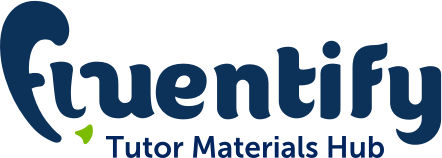TED Talks are marvelous little English teaching gems. They’re ideal for exposing students to new vocabulary, regional accents, and grammar in use. Plus, they help us tutors generate novel conversation topics during Fluentify sessions.
While we all love them dearly, they’re not a one-size-fits-all follow-up activity. Some of my students make far more progress using other resources. Here’s a little bit about who those students are and where they can find the TED Talk alternatives that best suit their needs.
1. THE FALSE BEGINNER: This student has an A1-ish level of English. Every now and then, a student is capable of preliminary communication, but also definitely not ready for a 30 minute lecture about education systems, architecture, or microfinance. Surely, beginner students who ask for clarification on questions like “Where do you work?” or “What are your hobbies?” need repetition. It’s easy to forget that they may also benefit from visual scaffolding. I recommend creating your own A1 content using Unsplash. This website offers free, searchable, visually compelling images that are great for providing false beginners with context. A photo like the one below can help bring “What do you usually eat for breakfast?” to life!

2. THE ALMOST THERE BUT NOT QUITE STUDENT: This student has a high A2, low B1 level of English. While the occasional TED Talk poses a welcomed challenge, a new TED Talk every week could be slightly overwhelming. You don’t want to lower your student’s morale by assigning grueling follow-up activities. To keep your intermediate students motivated with smaller, more manageable tasks, check out BBC’s Lingohack for A2s and 6 Minute English for B1s. BBC scaffolds content really nicely for non-native speakers, so these resources are great for students who can nearly handle TED Talks, but just want a little extra support.
3. THE “REAL PEOPLE DON’T TALK LIKE THAT” STUDENT: This student has a B2+ level of English. Since TED Talks are public lectures, presentations are usually organized coherently and accessibly. In the real world, people mumble; people speak with false starts and use, like, all kinds of, um, fillers. This student usually has considerable exposure to native English speaking friends or colleagues, and realizes that people in day-to-day life aren’t quite as articulate as the average TED presenter. For students who are looking for listening comprehension practice in more colloquial, casual contexts – podcasts, podcasts, podcasts! I like This American Life and Freakonomics, but it’s a wide world out there so let your student explore.
4. THE CURIOUS STUDENT: This student adores TED Talks, but wants to keep things interesting and try something new. Send this advanced student to The Atlantic for thought-provoking videos, often rich in vocabulary and complex sentence structure.
5. THE YOUNG (OR YOUNG AT HEART) STUDENT: Most primary and middle school students, once they’re comfortable, are naturally chatty so when you touch on something they’re into, it’s usually difficult to get in a word after that! However, after you’ve sufficiently covered the familiar (school subjects, friends, family, after-school activities, etc.) Pixar Short Films are amazing for kid-friendly unfamiliar topics. Since the Cambridge PET has a photo description task, Highlights is another great image resource that’s perfect for secretly preparing kids for standardized tests under the guise of fun!
Have more “Beyond the TED Talk” resource ideas? Post them below!


3 thoughts on “Beyond the Ted Talk: 8 Additional Resources to Get Students Speaking”
Great article Talene! For those students who are up for it, have ambitious and curious minds, you can send them to register for a free course on a variety of free University courses from Harvard, MIT, Berkeley, the Sorbonne and many others. Try https://www.edx.org/
Nice article Talene! – Brian
Thanks Talene! I love TED Talks but was needing something else. The Atlantic is a great resource!